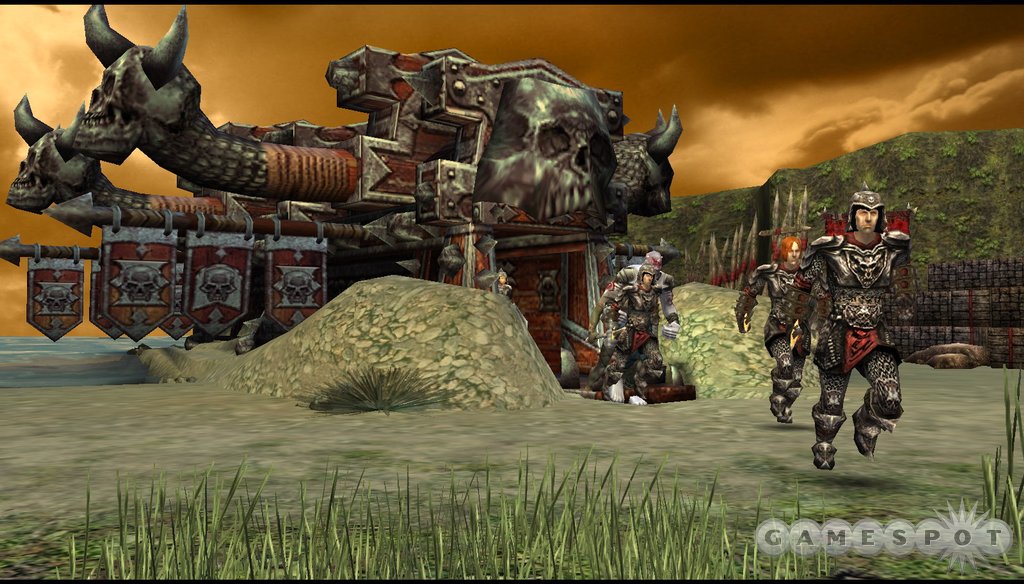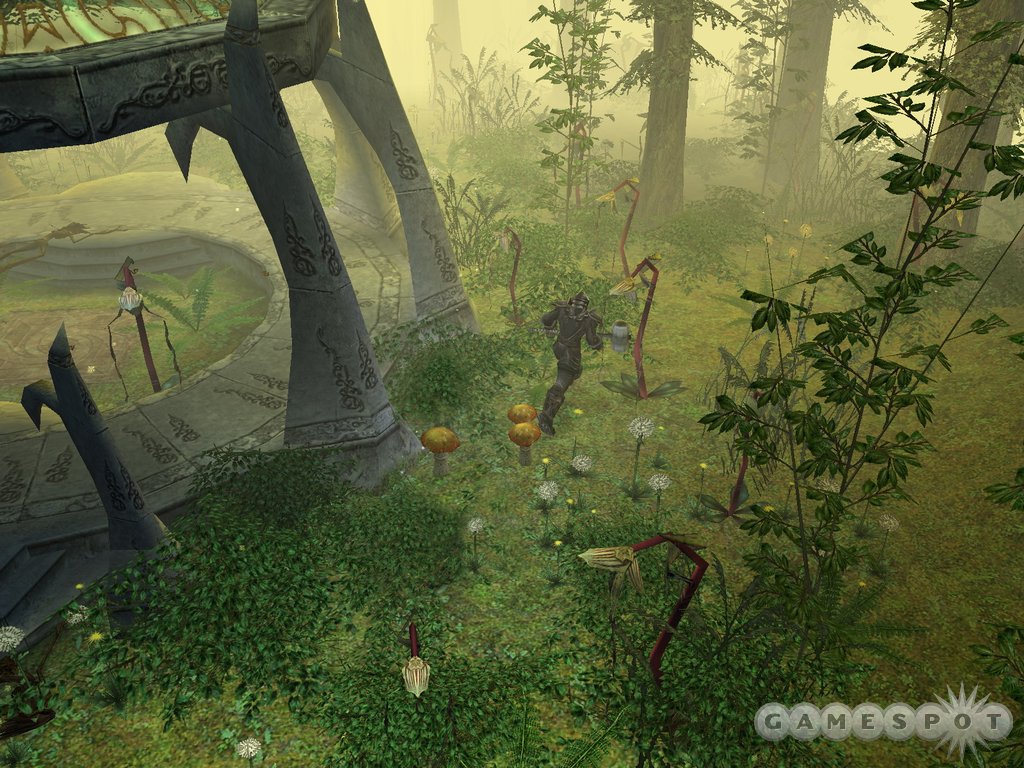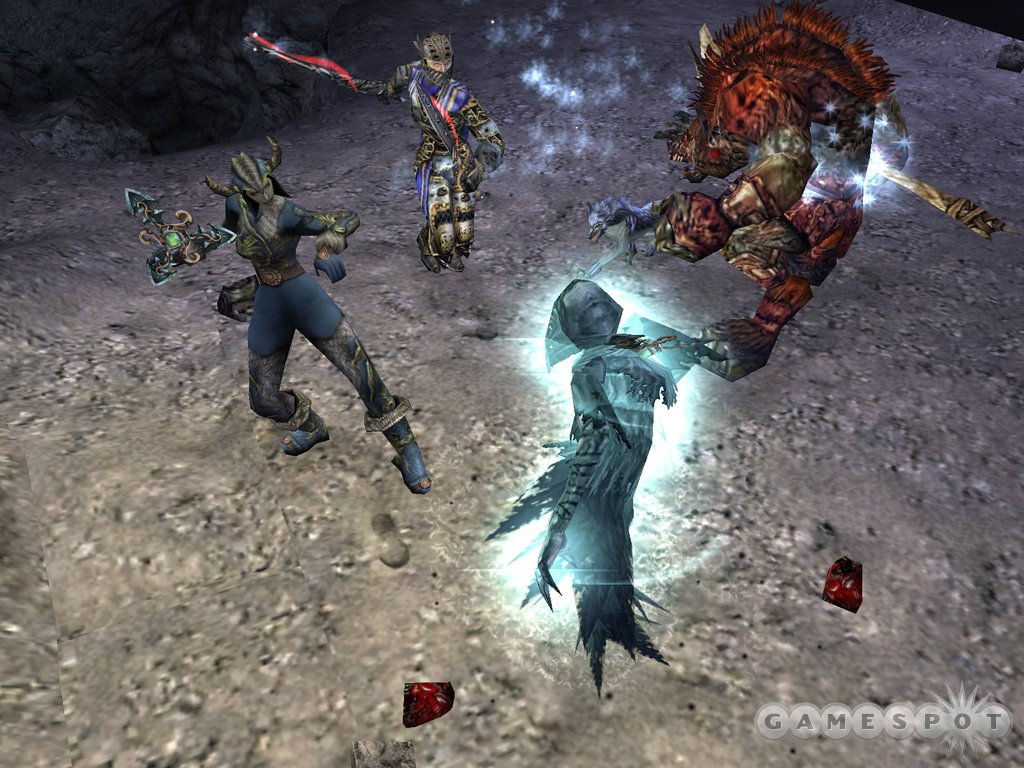Dungeon Siege II Hands-On
With Dungeon Siege II due out this summer, we got our hands on early code to see where Microsoft and Gas Powered Games are going with the sequel.
Gamers tend to fall into two camps when it comes to Dungeon Siege, the 2002 action role-playing game from Microsoft and developer Gas Powered Games. The first group loved Dungeon Siege for its ambitious attempt to make a Diablo-style, 3D hack-and-slash game that was fun and easy to play. But the second group felt that the game was too automated and linear for its own good, leaving little for the player to do other than just point and click. Well, with Dungeon Siege II on schedule for a release this summer, the big question is whether the Dungeon Siege formula has changed in any way. We got our hands on some early code to see how the game is shaping up, and for what it's worth, so far it feels like a bigger and better Dungeon Siege. Yes, that's a bit nebulous, but we'll try to explain.

In Dungeon Siege II, you'll travel back to the fantasy world of Aranna for a whole new adventure set in a different era from the original. You'll play as a mercenary for hire caught up in events beyond your control. You create your own character by choosing a gender, picking from one of the four races in the game (human, dryad, elf, and half-giant), and then customizing your basic appearance. After that, you choose a difficulty level to play and then you're plopped right into the game. Apparently, once you're finished with the game, which should last between 40 to 60 hours, you can go back with your existing characters and try playing it again at a harder difficulty level. In fact, the game only recommends that you play the hardest difficulty levels with high-level characters, which means level 70 and up. The monsters will be far more difficult, but the rewards will also scale up.
Judging from the introductory level (which also serves as a tutorial), there's a much stronger sense of story and role-playing than there was in the original. And, if anything, the story thus far reminds us quite a bit of the Baldur's Gate RPGs, which is definitely a compliment. There's a fair amount of treachery and some interesting developments in the plot, even early on in the game. The improved gameplay is also aided by the RPG-style dialogue system, which lets you choose from different responses, which means that you can try to steer a conversation in a certain direction. There's also a notable amount of sharp writing, giving characters a lot more personality than before.
It's also helpful that it feels like there's a lot more for you to do in this game. Dungeon Siege II introduces a new primary and secondary quest system, so you can accumulate various quests, which are all noted in your journal. This adds a lot more focus and gives you more incentive to walk around and explore, rather than bulldoze your way through. There is also more of a free-form feel to the level design. It's still fairly linear in that you can't really go anywhere the world, and all you have to do to advance the story is follow the main path. However, there seem to be a few more side paths than before, allowing you to explore a little more and giving you a chance to accomplish many of the secondary quests that are available.
In terms of interface, Dungeon Siege II remains a fairly simple game to play. The controls are still mouse-based, so moving around is as easy as pointing and clicking. When in battle, all you have to do is hammer on the right mouse button to attack a foe, and if you need to heal up, just hit the "H" key to drain a healing potion, assuming you have one on you. And there's still a fair bit of automation in the game. For example, every note or quest that you pick up is automatically cataloged in your adventuring journal. Pick up an item and it will automatically equip if you don't have something similar already (and assuming that you meet the various prerequisites to equip it).

Like the first game, there's simply a huge amount of stuff in Dungeon Siege II. For example, there's not just one style of short sword, there are various styles of short sword, and in various conditions, such as "rusty." And that's not even counting the different magical short swords, which have a boggling number of variations. One magic sword might inflict extra damage, while another might boost your character's strength. Thankfully, you can still purchase a mule to carry all your loot, and you can teleport back to town instantly at various points so that you can sell your excess stuff for gold.
The skill system has also been overhauled, and there's now a branching-style system that lets you invest points into various skills. So if you want to create a dual-wielding fighter, or a more defensive, shield-wielding fighter, you can do so. The fact that you have to choose where to invest your upgrade points should provide the game with a fair amount of replay value, as you can go back and experiment with different styles and choices. As with the original, there are three major character classes to play, from the frontline soldier/warrior to the bow-and-arrow-firing ranger to the spell-casting magic user. There is also a considerable amount of replay value that is added by each class having its own unique skills, powers, weapons, equipment, armor, and more, as you'll be given the opportunity to go back and try them all out.
No matter what class you choose, you can form a party to augment your character and compensate for any weaknesses. At first, you can only add one party member to your team, but you can go to any innkeeper and, for a hefty amount of gold, get your party limit increased so you can add additional members. The party system lets you take control of any members of your party, and the command system lets you give simple orders to the rest of your team. For example, tell them to regroup and they'll follow you, or you can have them defend you in a fight or mirror your moves, which is most useful if you want to concentrate the party's firepower on a single opponent.
If you fall in battle (and trust us, that'll happen a lot), you have various options. Assuming that you're merely knocked unconscious and fall to the ground, you'll eventually recover and get back up. But if you or your party is killed, you can use a resurrect spell (assuming there's anyone left to cast it), or else you will spawn at the nearest town, but with all your equipped items and 25-percent of your gold left behind at your gravestone. You can then ask a member of the Guild of Death to return all your equipment, but you'll lose your gold, or else you can simply travel back to the gravestone and all your stuff will magically reappear.

Put it all together and Dungeon Siege II feels like more of a role-playing game than its predecessor, which is good news indeed. We easily found ourselves getting caught up in the frenetic action of the game, and there is a lot to explore and do, even early on. Gas Powered Games definitely looks like it listened to the feedback from those who played Dungeon Siege, and Dungeon Siege II looks like it will improve on the original in every way. The game is in the final months of development, and Dungeon Siege II is scheduled to ship this summer.
Got a news tip or want to contact us directly? Email news@gamespot.com
Join the conversation